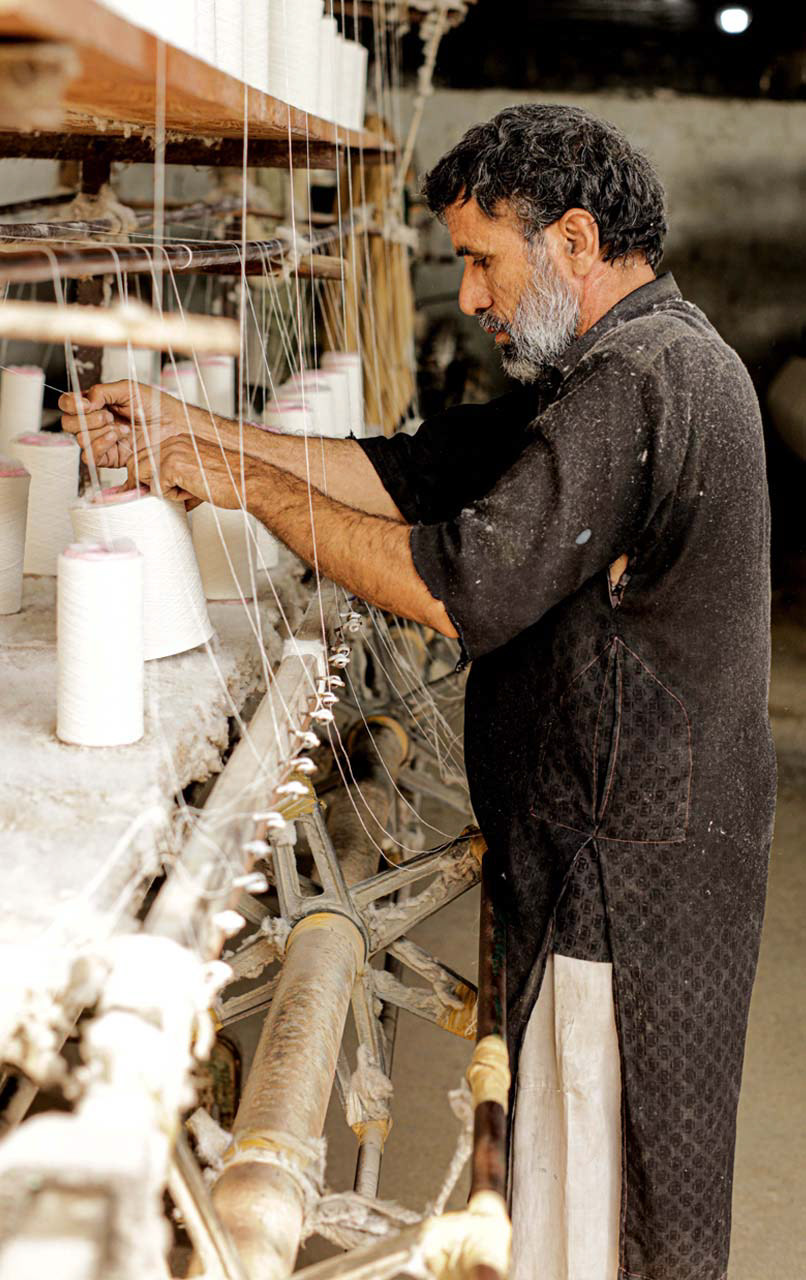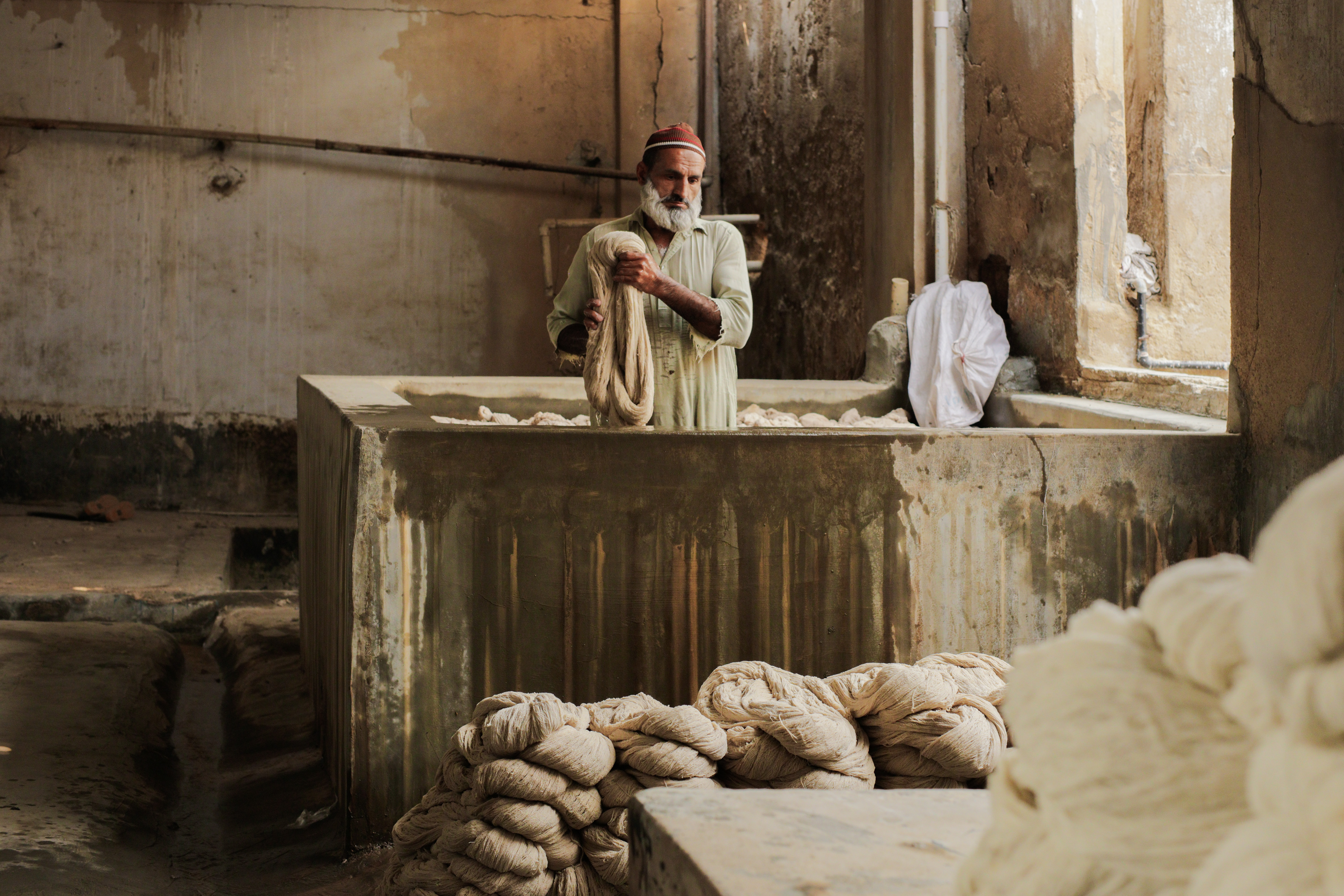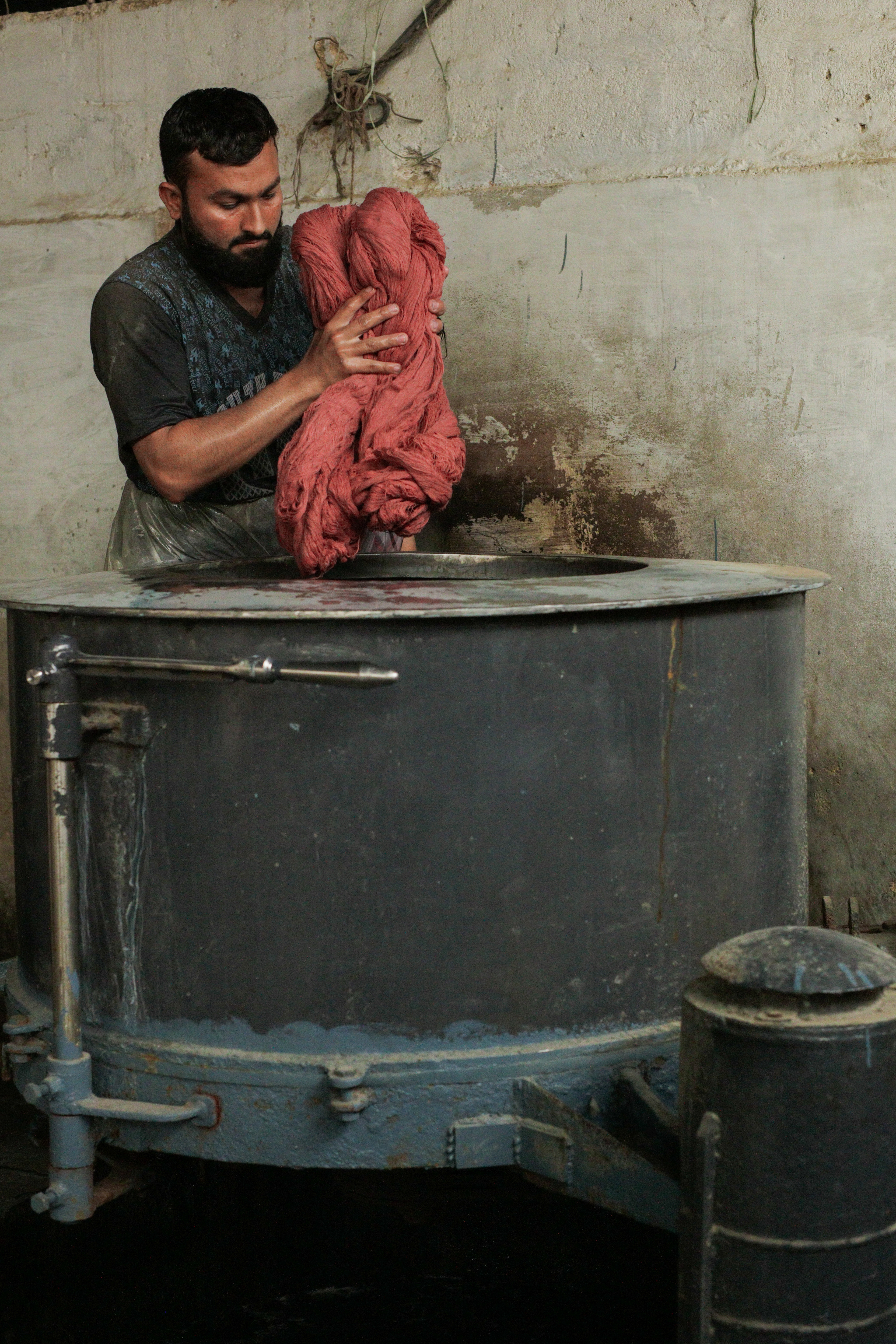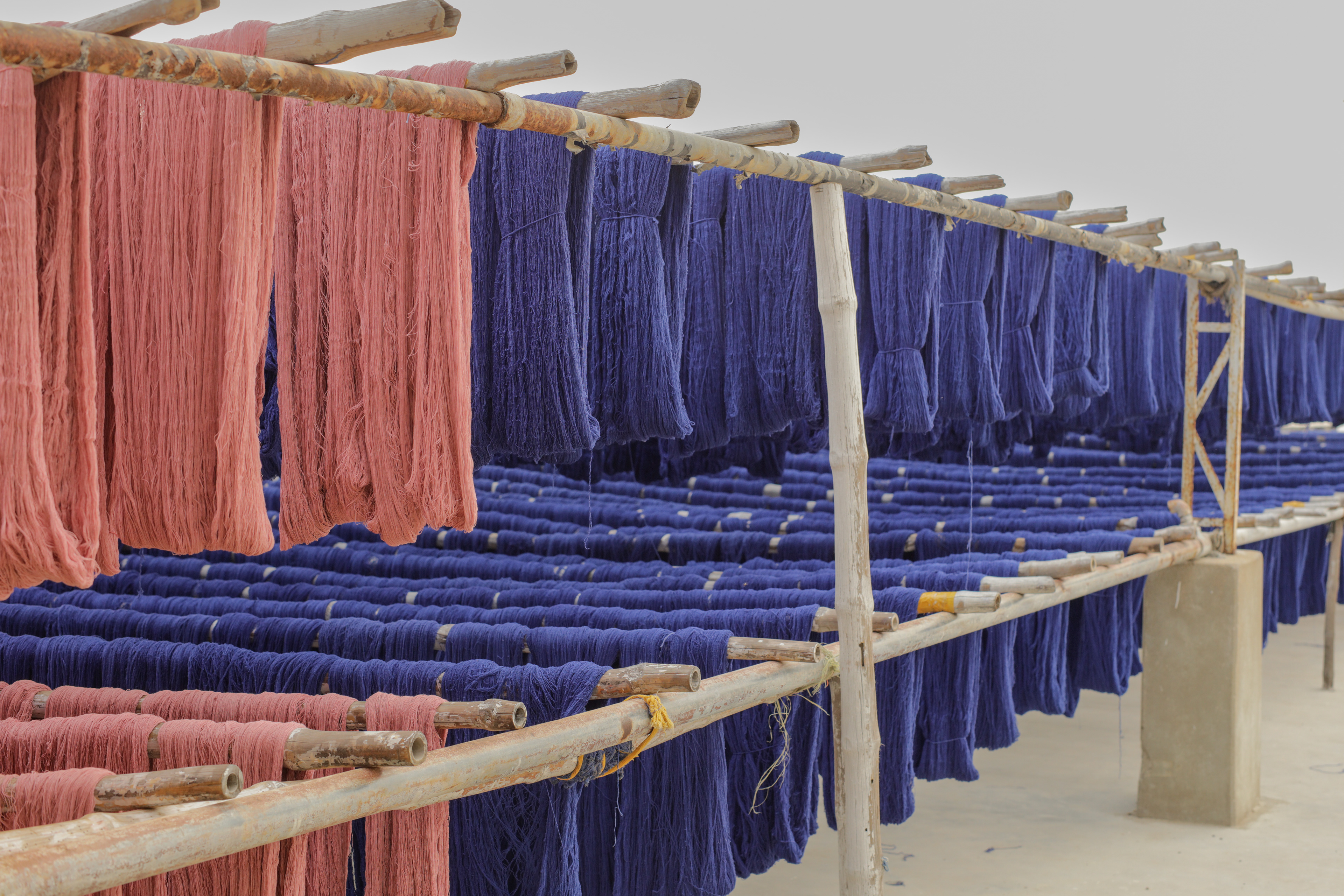
Malik at a local textile manufacturing unit in North Nazimabad in Karachi, Pakistan.

Malik at a local textile manufacturing unit in North Nazimabad in Karachi, Pakistan.
Malik, 61, has worked in the cotton dyeing industry for 25 years. Although he recently suffered from a severe bronchitis attack, as his family's only breadwinner, he must return to work. His primary duty is converting cones to reeling for dyeing purposes. Workers like Malik are exposed to a significant amount of cotton dust and pesticides while processing these cones, a reality that leads to respiratory disorders like byssinosis, commonly known as ‘brown lungs’ or ‘chronic bronchitis’.


Pakistanis still follow a primitive method for dyeing fibres, which involves scouring and bleaching. These processes are labour-intensive and require workers to stand in a pool of chemicals for long periods. For example, a worker dyes white colours and is exposed to a pool of bleach and acid for approximately 4-5 hours daily. In addition, the bleaching agents used during the dyeing process cause severe dermatitis and other skin diseases.



Musculoskeletal injuries are common as dyeing work is manual and repetitive, requiring workers to dip yarn into chemical water and tumble dry fabrics by hand. The most frequently reported ailments are disorders like back pain, neck pain, joint pain, and arthritis in the wrists.

